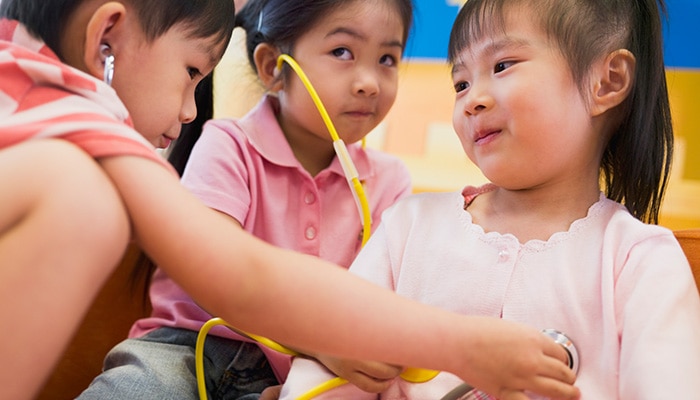While we believe that the books and resources recommended may be of value to you, keep in mind that these are suggestions only and you must do your own due diligence to determine whether the materials are appropriate and suitable for your use. PNC has no sponsorship or endorsement agreement with the authors or publishers of the materials listed.
HEALTHY ME

My Beating Heart
Children will learn about their heart.

Lesson Objective
Children will identify the location, size, and feeling of their heart.
Science
What You'll Need
- Picture of a heart (if possible)
- Drawing paper – 1 sheet per child
- Chart paper – 1 sheet
- Crayons or markers
What To Do
Note: Prior to beginning the lesson, record each child’s name on the chart paper. Make two columns to record their resting heartbeat and their active heartbeat.
- Discuss information about the heart with the children (see Did You Know).
- Explain that the heart is located just to the left of the center of the chest and help the children locate the area of their heart.
- Ask the children to place their hand on their heart and see if they can feel their heartbeat (see Guiding Student Inquiry). Explain that this is a gentle and soft feeling and may be difficult to find.
- Tell the children there are other ways to feel your heart beating; this is called your pulse (see Did You Know). Show the children how to place their fingertips on their chin line below the ear, and follow it down to the neck to feel their heartbeat.
- Have the children count out the number of beats for 15 seconds. Record the number of beats on the chart.
- Explain that the rate of your heartbeat depends on what you are doing. Have the children perform about 20 jumping jacks.
- Have the children feel their heartbeat immediately after jumping. Count out the number of beats for 15 seconds and record on the chart. Discuss the differences (see Guiding Student Inquiry).
- Explain that each person’s heart can be a different size and it is about the size of their fist.
- Have the children make a fist and trace around it using a crayon or marker on a piece of drawing paper. Hang up the drawings and compare.
Resources
Home School Resources
Home educators: use these printable lesson PDFs to teach this lesson to your home schoolers. They're available in English and Spanish.
Content Provided By
Common Core State Standards Initiative – These lessons are aligned with the Common Core State Standards ("CCSS"). The CCSS provide a consistent, clear understanding of the concepts and skills children are expected to learn and guide teachers to provide their students with opportunities to gain these important skills and foundational knowledge [1]. Visit the CCSS


